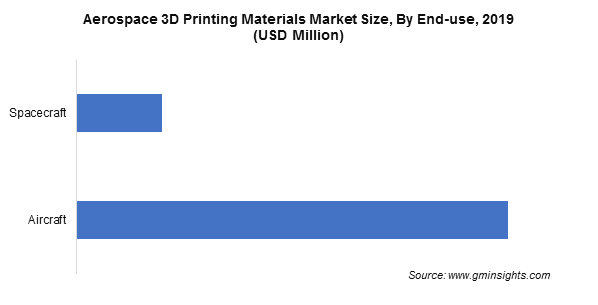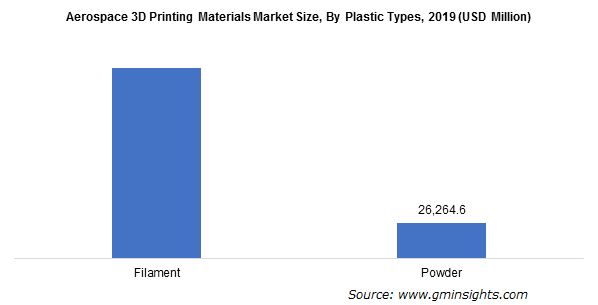Home > Chemicals & Materials > Advanced Materials > Aerospace 3D Printing Materials Market
Aerospace 3D Printing Materials Market Analysis
- Report ID: GMI4698
- Published Date: Jun 2020
- Report Format: PDF
Aerospace 3D Printing Materials Market Analysis
Part production segment is anticipated to lead the market share during the forecast timeframe. The materials have substantially been used in manufacturing various parts such as engine nozzles, brackets, wall panels, etc. Significant improvements in the size of industrial printers, availability of diverse range of materials, and growing R&D funding to gain the desired turnaround time for medium-sized production runs has proliferated the demand for end-use parts. The technology helps in manufacturing intricate complex parts that are lightweight and more resilient than those produced by traditional methods.
In 2019, the plastic segment accounted for around 65% share in the aerospace 3D printing materials market. Plastic material finds widespread applications in structural and non-critical applications such as interior components, dashboard interface, and prototypes owing to its low weight and cost-effectiveness. PEI (ULTEM) has gained significant popularity in aerospace 3D printing industry owing to its excellent mechanical and thermal resistance. It is mainly used in the manufacturing of ignition elements in lighting systems, electric switches, and frames.
The structural components segment is poised to witness 17.5% growth through 2026 owing to its demand in the production of lightweight air ducts, and wall panels. AM enables the fabrication of lightweight and highly complex cabin and interior parts with excellent stability. It is used to manufacture low-volume structural metal brackets that mount life-saving systems to the interior wall of the aircraft.

In 2019, the aircraft end-use segment generated over USD 210 million revenue in the market owing to rising adoption of additive manufacturing in aviation industry. This is mainly attributed due to the rising concern for fuel-efficient lightweight aircrafts and stringent emission standards. Aviation industry participants including, Boeing and Airbus have successfully adopted aerospace 3D printing materials in the production of various commercial aircraft parts.
North America aerospace 3D printing materials market dominated around 50% revenue share in 2019 due to presence of robust aerospace sector in the region. Economical air travel rates and presence of major aerospace companies such as Boeing and Lockheed Martin are expected to spur the market revenue. Further, the region has robust military and space industries that drives the consumption of these materials in fighter jets and spacecrafts.

